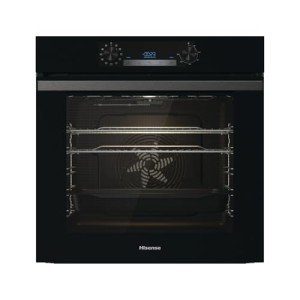Ten Built In Electric Ovens That Really Help You Live Better
페이지 정보

본문
The Comprehensive Guide to Built-in Electric Ovens and Hobs
In today's fast-paced world, modern-day kitchen appliances have actually developed dramatically to cater to the tastes and requirements of contemporary house owners. Amongst these appliances, built-in electric ovens and hobs stick out for their performance, style, and performance. This article explores the features, advantages, setup tips, and maintenance of built-in electric ovens and hobs, together with addressing often asked concerns.

Comprehending Built-in Electric Ovens
What Is a Built-in Electric Oven?
A built-in electric oven is an appliance created to be set up into a wall or kitchen cabinets, providing a smooth, integrated appearance in the kitchen. Unlike freestanding intergrated ovens, built-in designs save area and typically come equipped with additional functions such as self-cleaning cycles, convection cooking, and various cooking modes.
Types of Built-in Electric Ovens
- Single Ovens: Ideal for smaller sized kitchen areas or those who prepare for built In electric ovens fewer people.
- Double Ovens: Offer more cooking area, suitable for bigger households or those who entertain frequently.
- Combination Ovens: These consist of both a conventional oven and a microwave, supplying versatile cooking choices.
Benefits of Built-in Electric Ovens
| Advantage | Description |
|---|---|
| Space-Saving Design | Fits perfectly into cabinets, releasing up counter area. |
| Improved Aesthetics | Creates a contemporary, expert kitchen look. |
| Versatile Cooking Options | Typically features multiple cooking modes including bake, broil, and convection. |
| Energy Efficient | Consumes less energy than standard ovens. |
Understanding Built-in Hobs
What Is a Built-in Hob?
A built-in hob is a cooking surface area installed into the kitchen countertop, integrating seamlessly with the kitchen design. Readily available in electric, induction, and gas ranges, electric hobs are renowned for their accuracy and ease of use.
Types of Built-in Hobs
- Electric Hobs: Traditional coil elements that heat through electrical resistance.
- Induction Hobs: Use magnetic energy to heat only the cookware, making them faster and safer.
- Ceramic Hobs: Feature a smooth surface area with convected heat beneath, offering simple cleaning.
Benefits of Built-in Hobs
| Advantage | Description |
|---|---|
| Quick Cooking Times | Electric hobs heat quickly, decreasing general cooking time. |
| Easy to Clean | Flat surface permits for fast and straightforward cleansing. |
| Durable | Typically built to last and endure heats. |
| Versatile Compatibility | Works well with different pots and pans products. |
Installation Considerations
Setting up a built in range oven-in electric oven and hob requires mindful planning.
Steps for Installation
- Step the Space: Ensure the dimensions of the oven and hob match the assigned space in your kitchen.
- Examine Electrical Requirements: Consult an electrical contractor to make sure wiring can deal with the device's power needs.
- Placement of Appliances: built In electric Ovens Position the oven at a convenient height, typically in between waist and eye level.
- Ventilation: Ensure appropriate ventilation, specifically if your builtin oven integrates a range hood.
Vital Tools
- Power drill
- Screwdrivers
- Level
- Measuring tape
Security Precautions
- Constantly detach the power before installation.
- Follow manufacturer directions carefully.
- Think about hiring a professional for electrical connections.
Upkeep Tips
Maintaining built-in electric ovens and hobs is essential for durability and efficiency.
Routine Care Routine
- Cleaning the Surface: Use a soft fabric and manufacturer-recommended cleaner.
- Examining Electrical Connections: Check cables and plug for damages occasionally.
- Cleaning Filters: If the fitted oven has a ventilator, tidy or change the filters as required.
Repairing Common Issues
| Concern | Possible Solution |
|---|---|
| builtin oven Won't Heat | Examine the power supply and heating component. |
| Heating Inconsistency | Examine the thermostat and oven calibration. |
| Hob Not Heating | Make sure pots and pans is suitable and inspect the power supply. |
Often Asked Questions
1. How do I pick the ideal size built-in electric oven?
Choosing the ideal size includes determining your kitchen space and considering just how much cooking you normally do. If you entertain often or have a large household, decide for a double oven.
2. Are built-in electric hobs safe to use?
Yes, built-in electric hobs are safe, particularly induction hobs which just heat the pots and pans, reducing the risk of burns.
3. Can I install a built-in oven and hob myself?
While it is possible for skilled DIY enthusiasts, employing a professional is suggested, especially for the electrical connections.
4. How typically should I clean my built-in oven and hob?
Cleaning up should be done regularly after usage, with deep cleaning periods depending on cooking frequency - generally every few months.
5. Do built-in appliances require special upkeep?
Built In Electric Ovens-in appliances need similar maintenance to freestanding designs, however proper care must be taken with their surrounding cabinets.

Built-in electric ovens and hobs provide a fusion of technology and design, using effectiveness and modern visual appeals to any kitchen. With correct choice, cautious installation, and routine upkeep, these appliances can boost one's cooking experience for several years. Understanding the functions, advantages, and care requirements can empower property owners to create the kitchen of their dreams-- effectively and stylishly.
As cooking areas continue to evolve into main centers of the home, choosing the best built-in services plays a vital role in everyday cooking creativity and satisfaction.
- 이전글10 Healthy Habits For A Healthy Cheap Integrated Oven 25.05.19
- 다음글Five Killer Quora Answers On Luton Doors 25.05.19
댓글목록
등록된 댓글이 없습니다.



